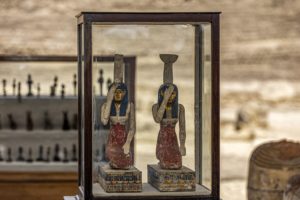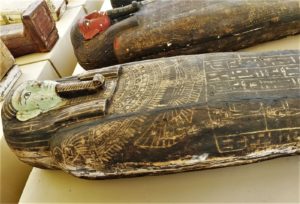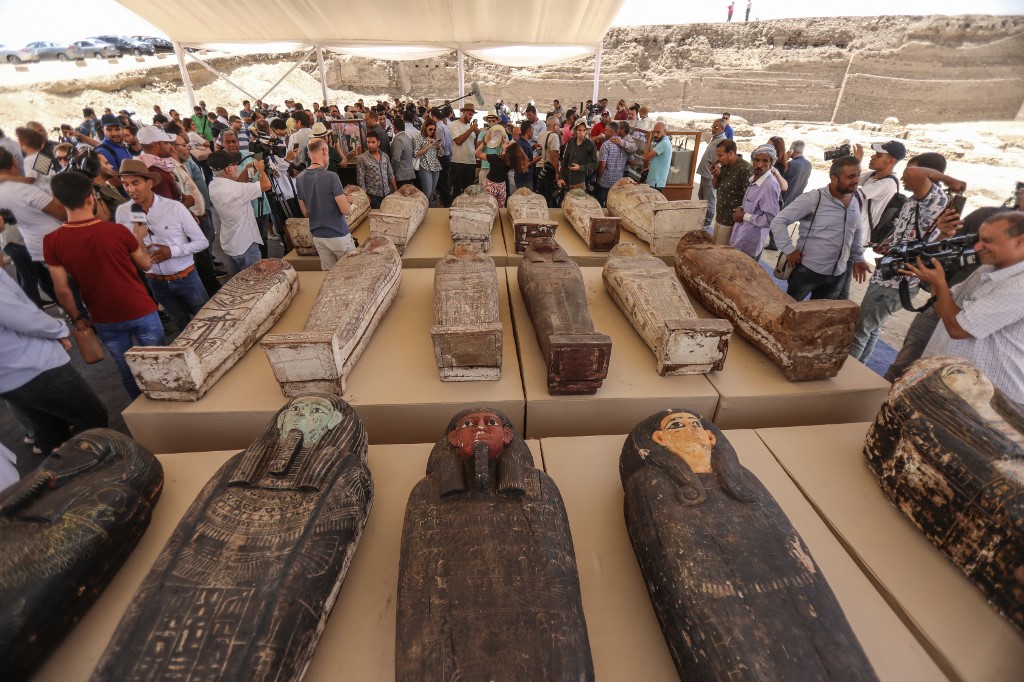São Paulo – An archaeological mission at the Bubastian cemetery in the Saqqara Necropolis uncovered a collection of 250 painted wooden sarcophagi and 150 bronze statues of Egyptian deities of different sizes, among other artifacts. Saqqara is located in the province of Giza, south of Cairo, Egypt. The discovery was made public on Monday (30) by Egypt’s Ministry of Tourism and Antiquities, which said the sarcophagi and statues dated back to circa 500 BC.

The government claims this was the most extensive bronze collection ever found. The statues depict ancient Egyptian deities such as Bastet, Anubis, Osiris, Amon, Isis, Nefertum, and Hathor, and artifacts used during Isis’s rituals, such as the sistrum, a percussion instrument made of bronze with a rattling sound. Another find was a headless statue of the polymath Imhotep, who built the pyramid of Saqqara.
A collection of intact painted wooden sarcophagi containing mummies in excellent condition was also unearthed from burial pits, along with amulets and wooden boxes.
Two painted wooden statues were also found, with golden faces, depicting the deities Isis and Nephthys mourning the dead. These were dated to the Late Period of Ancient Egypt, circa 5 BC.

The Egyptian mission was led by Mostafa Waziri, secretary-general of the Supreme Council of Antiquities. He reported a papyrus with hieroglyphics was found during excavations inside one of the coffins and may contain verses from the Book of the Dead. The find was transferred to the laboratory of the Egyptian Museum in Tahrir to be studied and analyzed.
A collection of cosmetics was also found, including combs, kohl, or kajal, black paint used for the eyes, containers, bracelets, earrings, seed necklaces, and some typical utensils from the period.
The coffins will be transferred to the Great Egyptian Museum (GEM), expected to open soon, and become part of the exhibition in the museum’s main hall.
The archaeological mission has been working in the Saqqara Necropolis area since 2018 and has already made several discoveries, including collections of artifacts, coffins, and human and animal mummies.
*With information from Egyptian newspaper Al Ahram.
Translated by Elúsio Brasileiro




